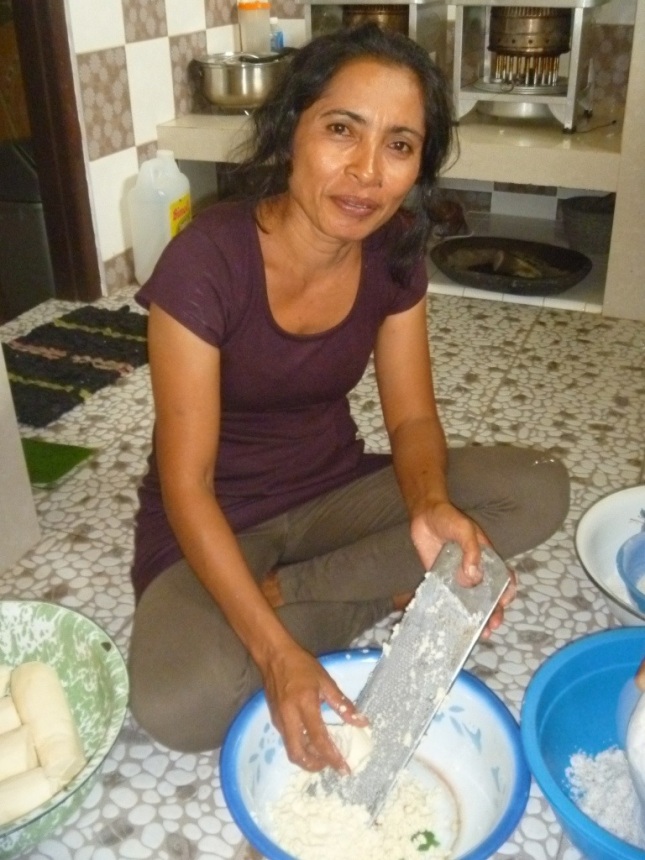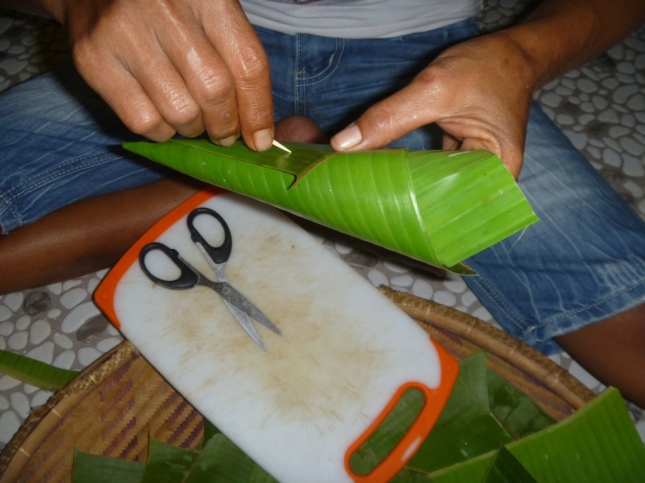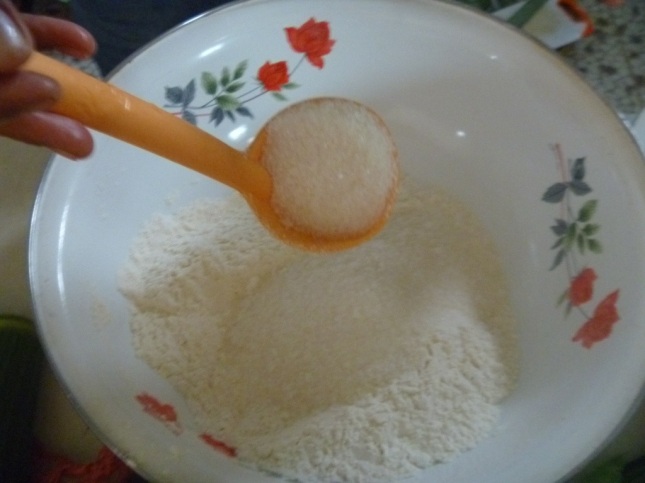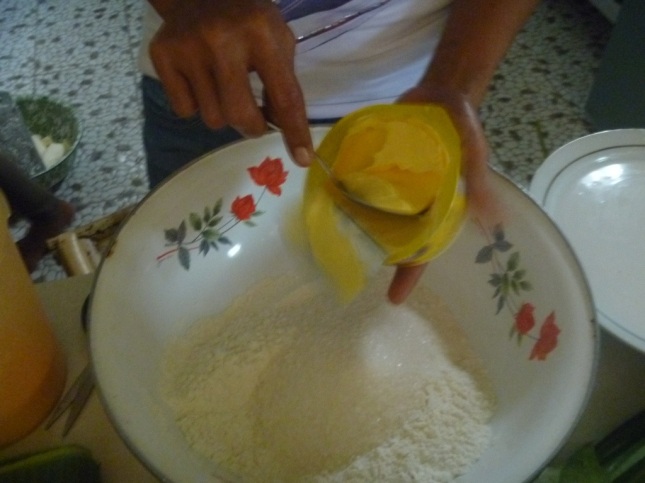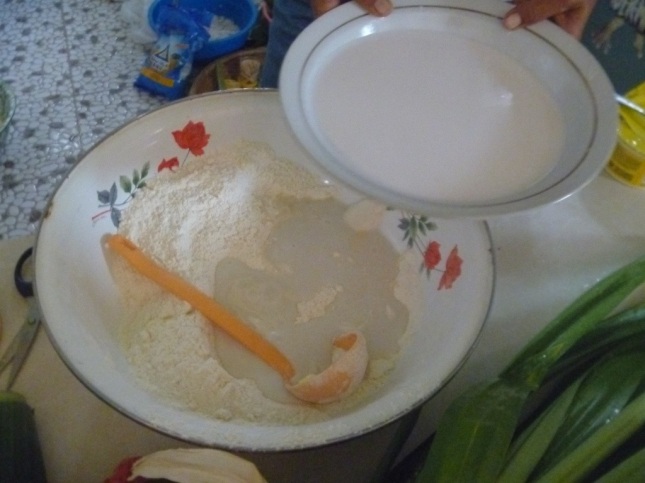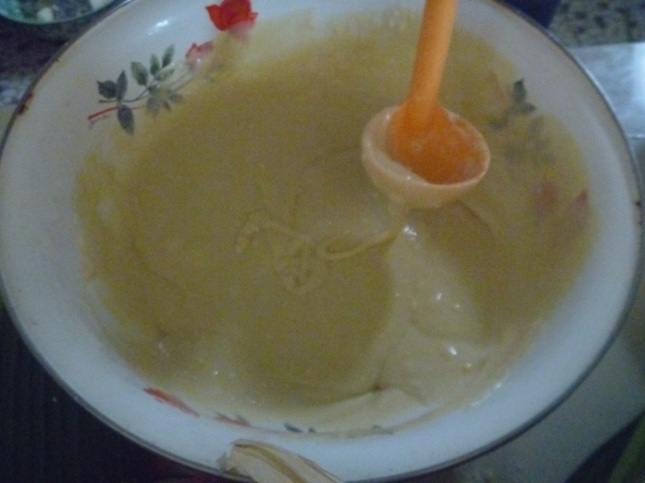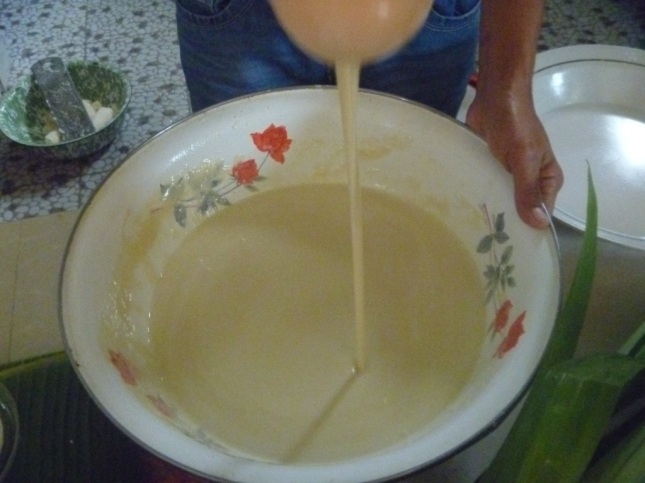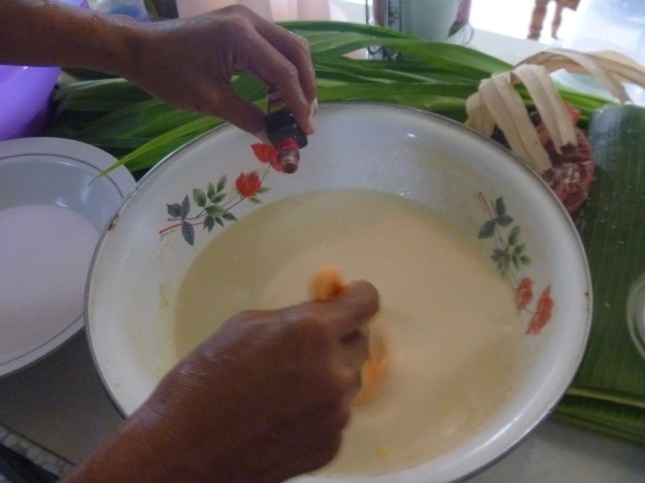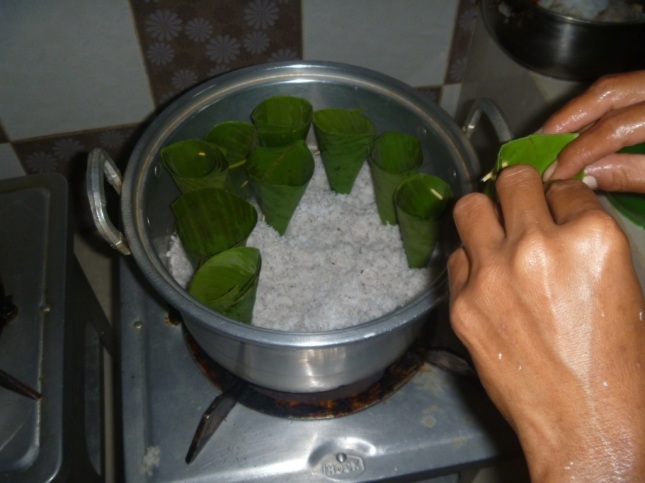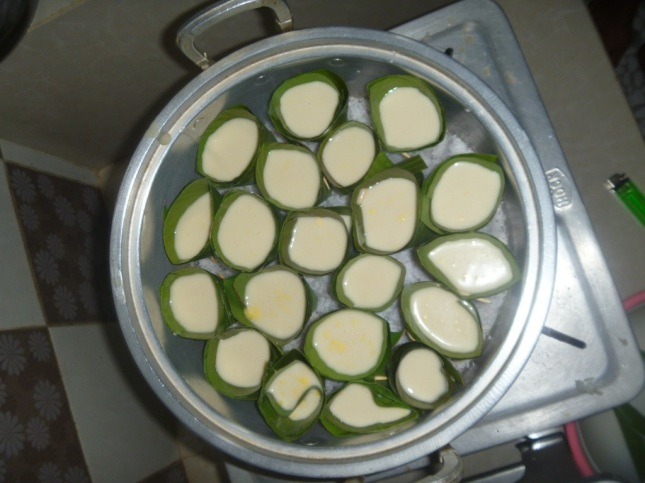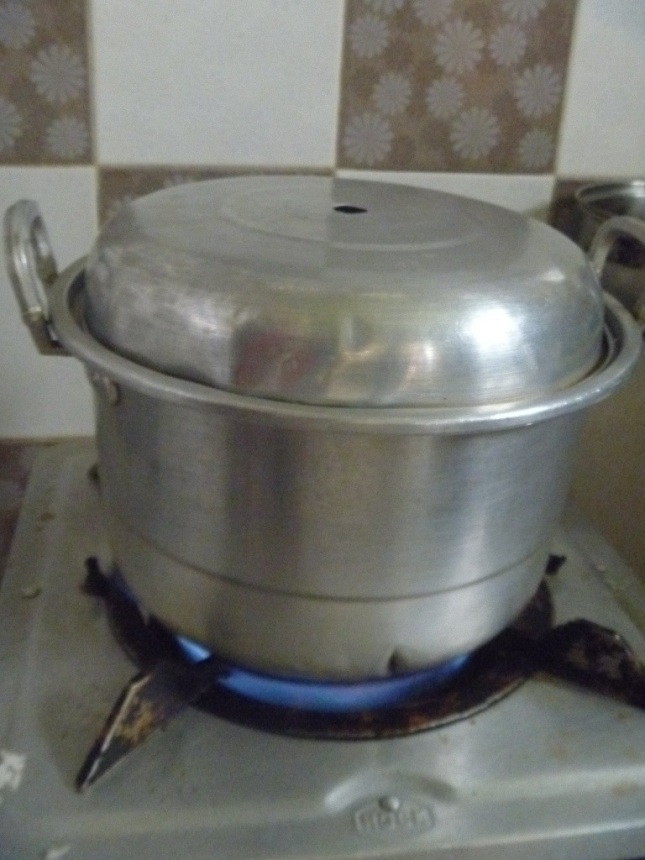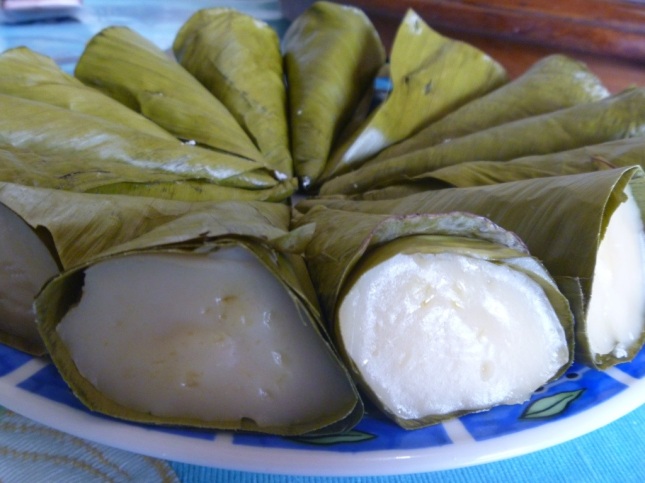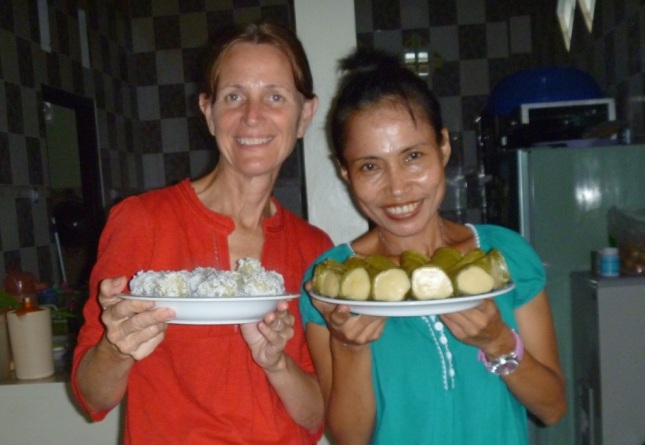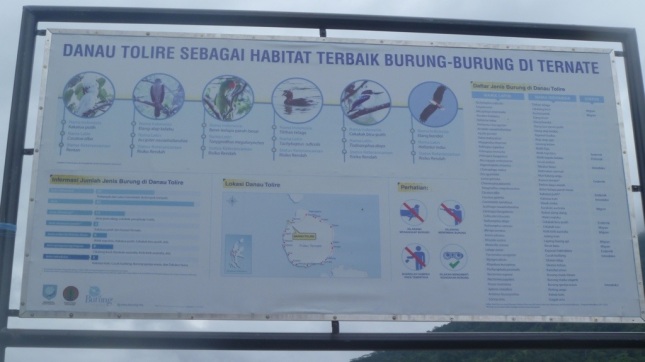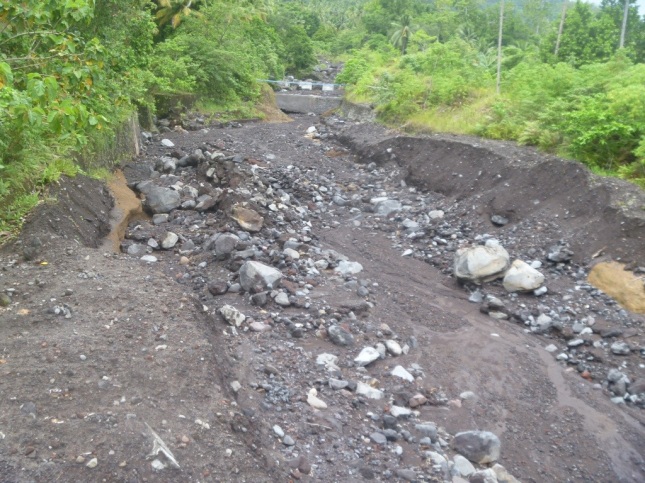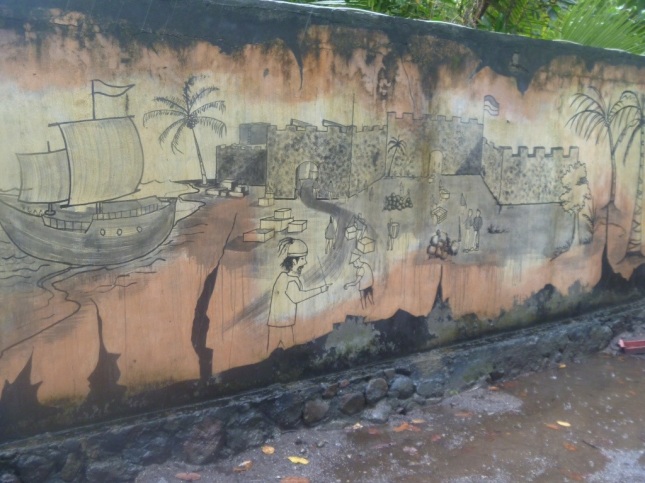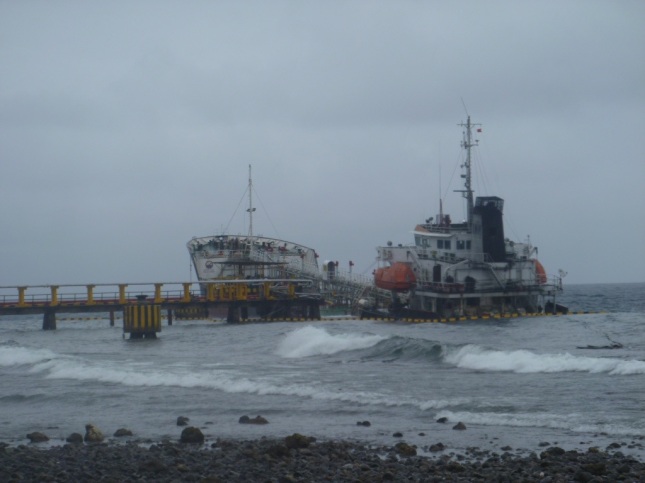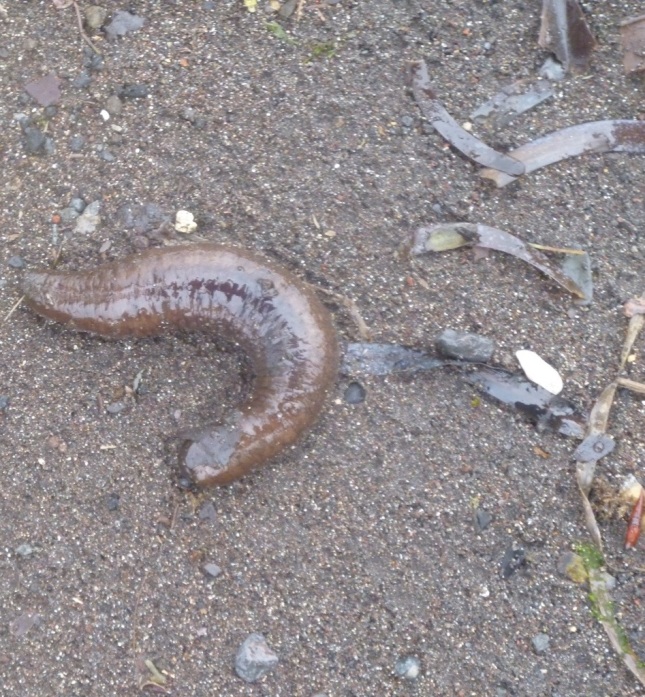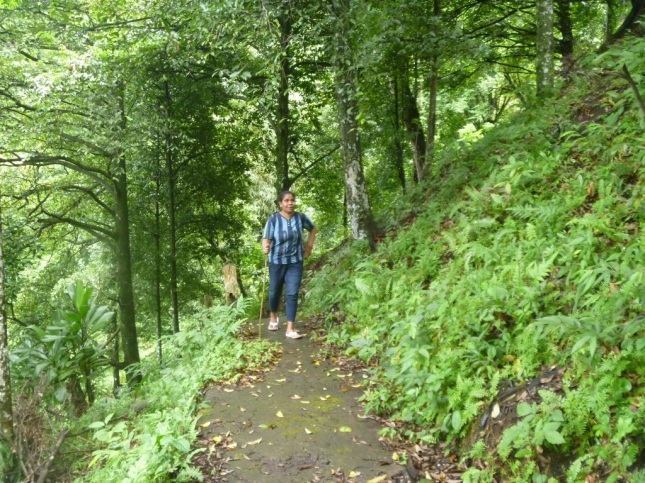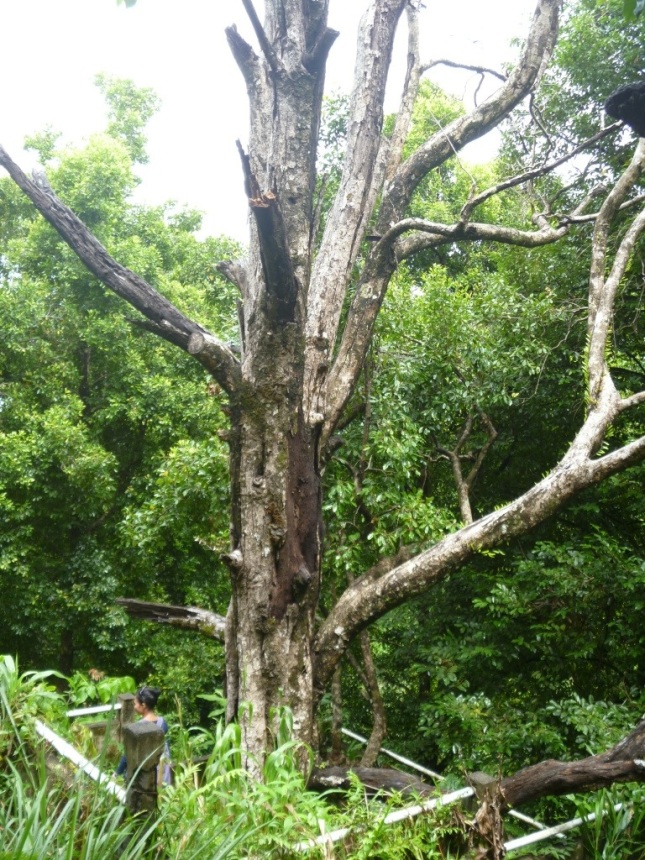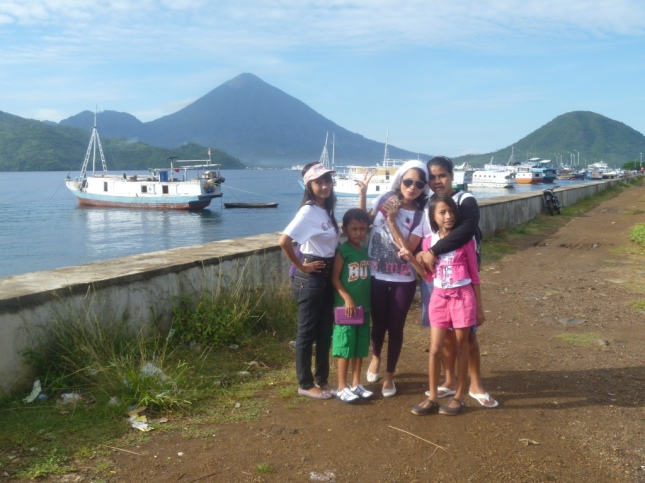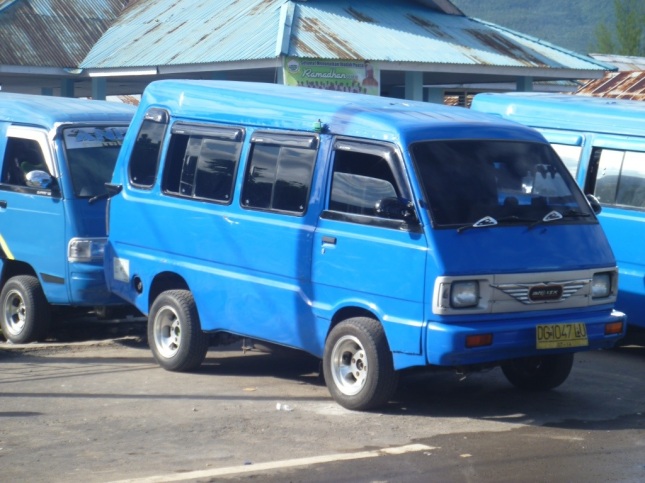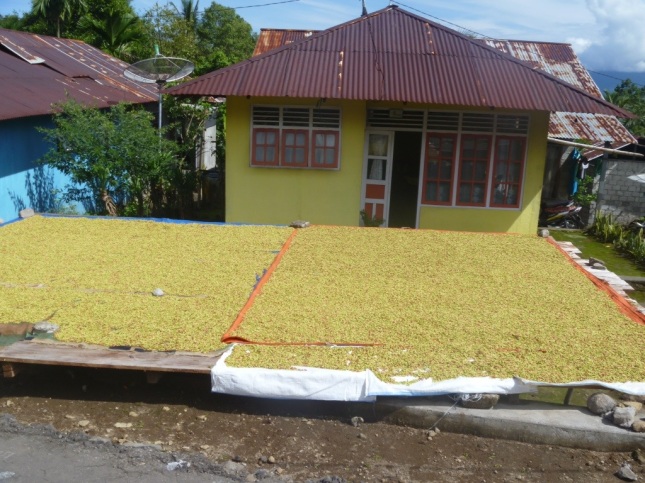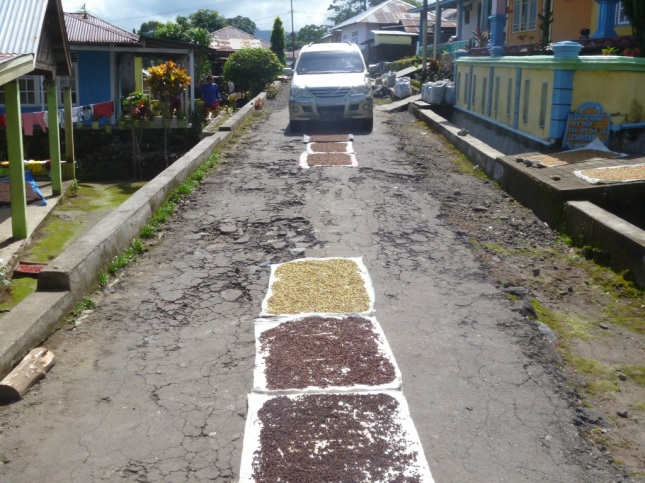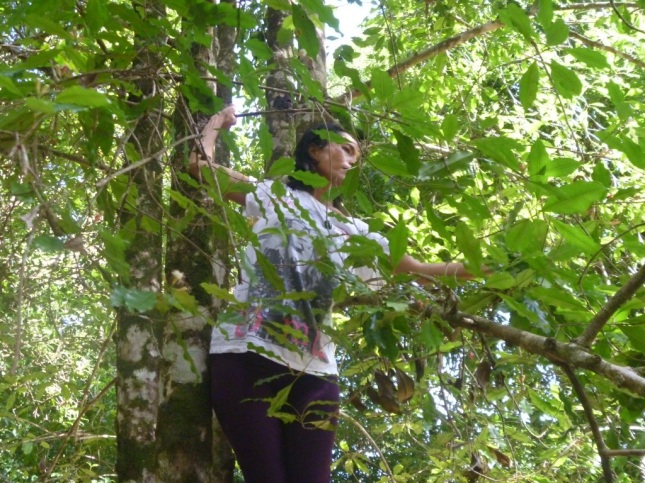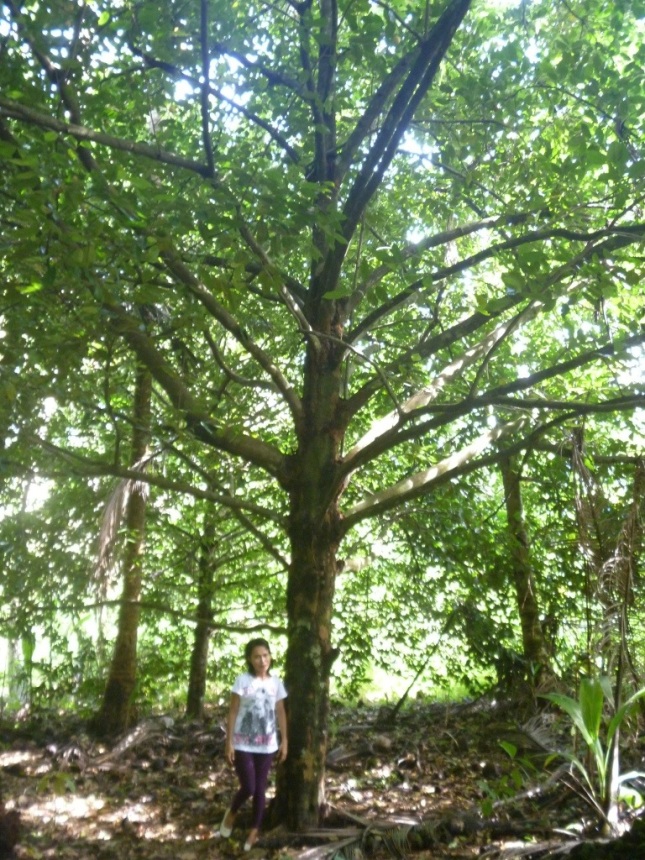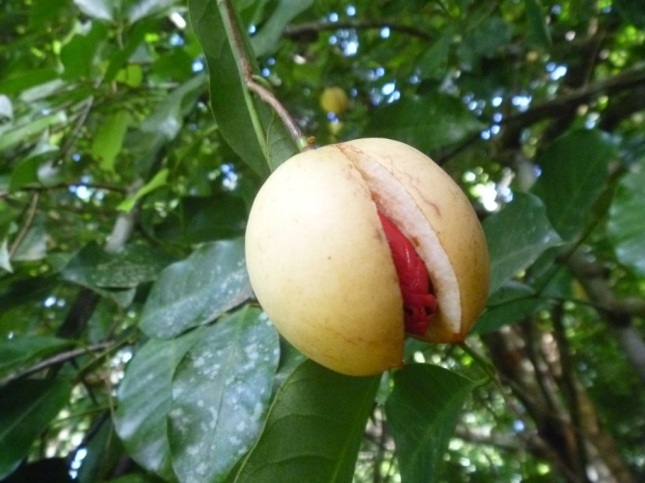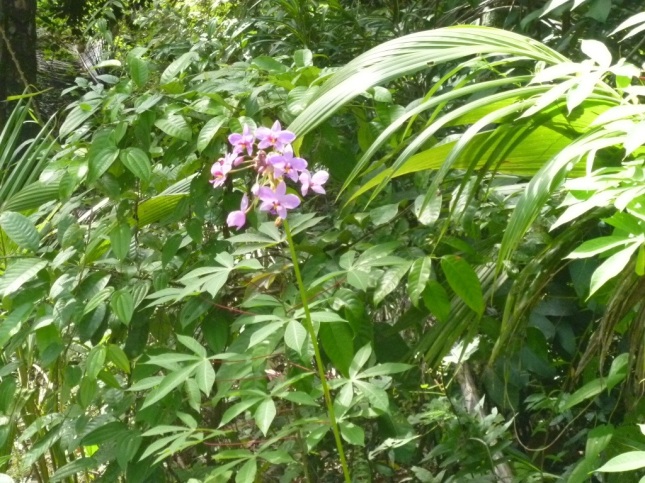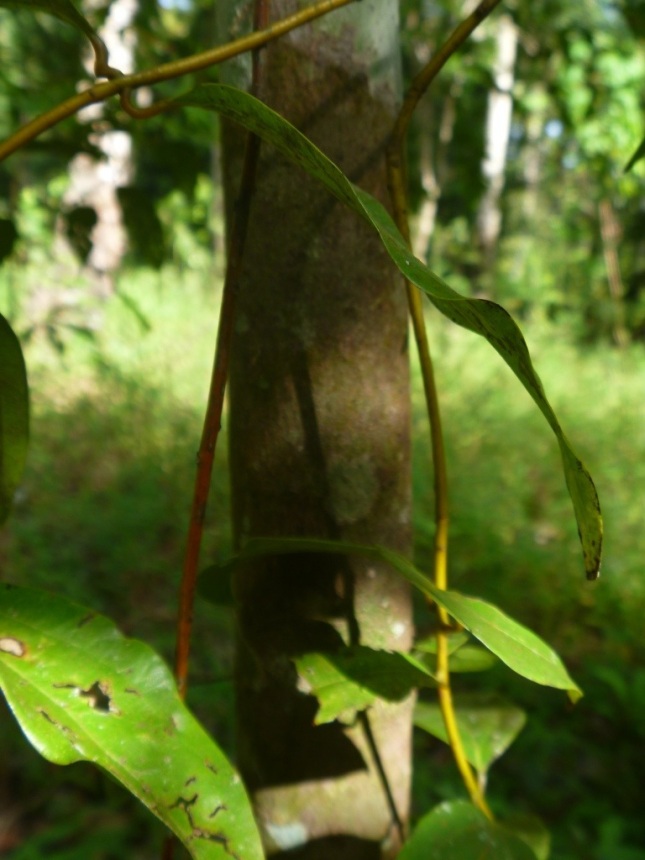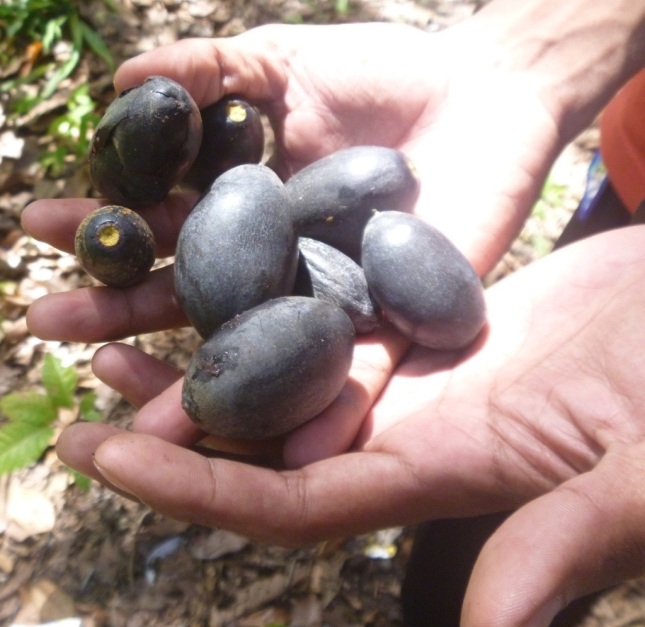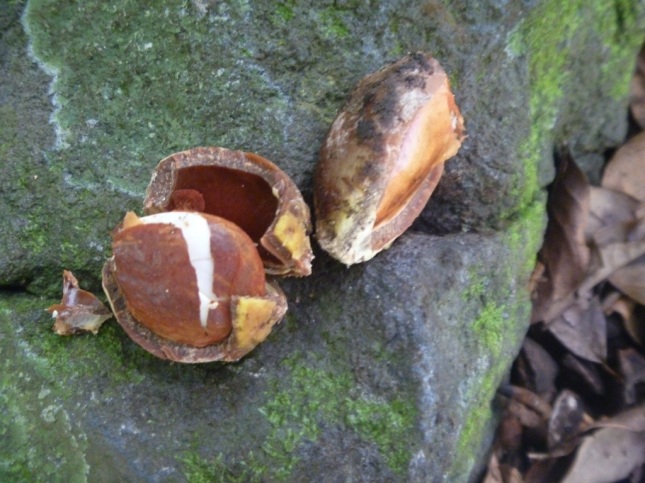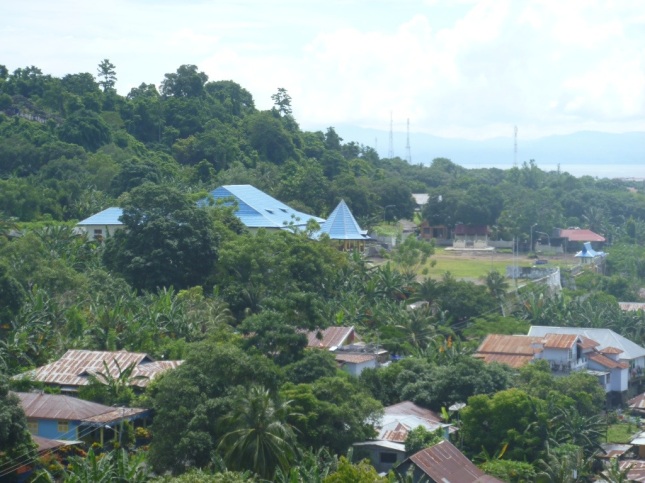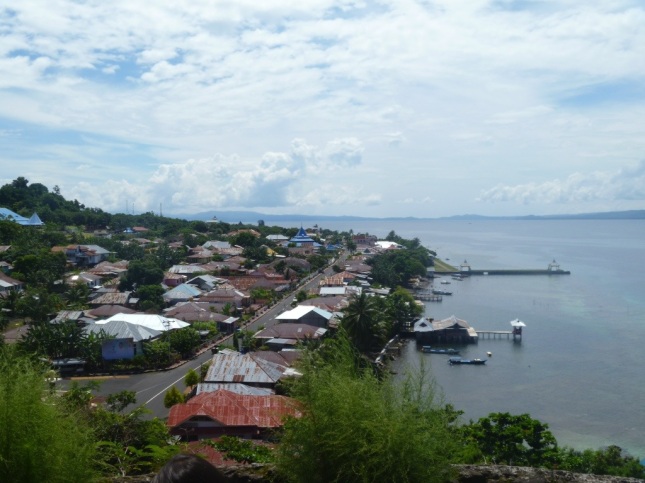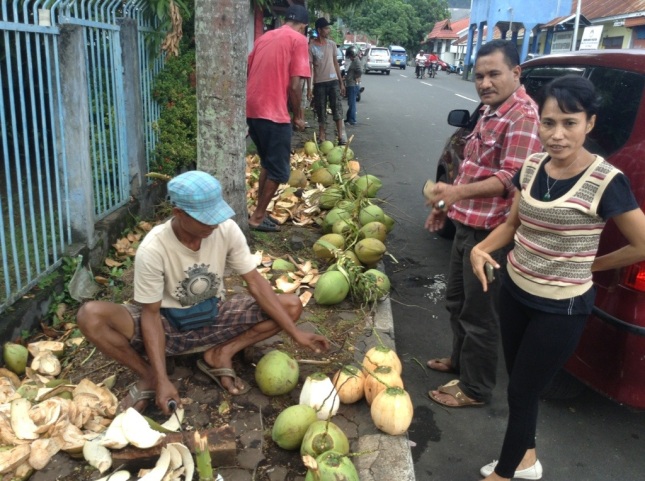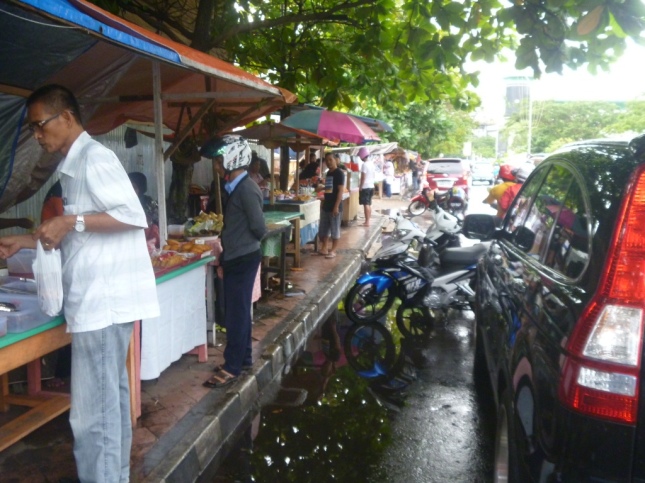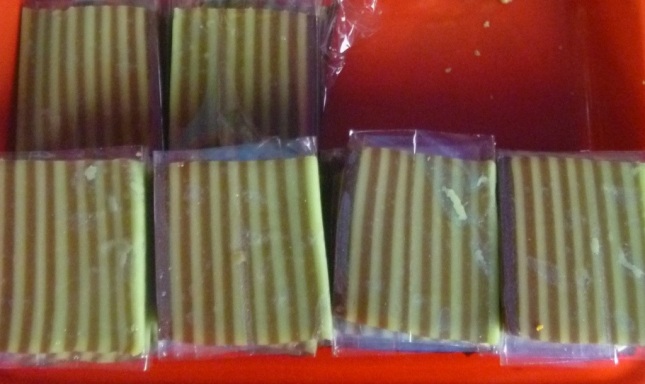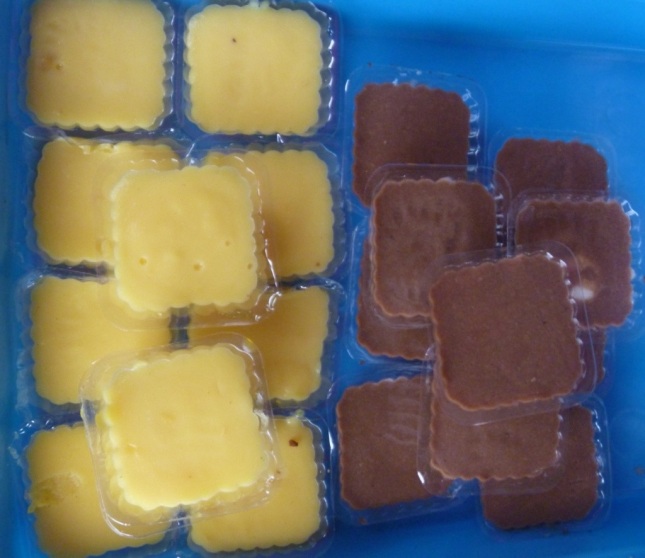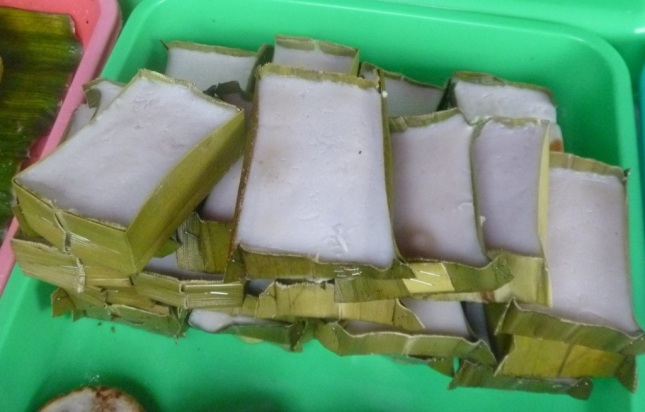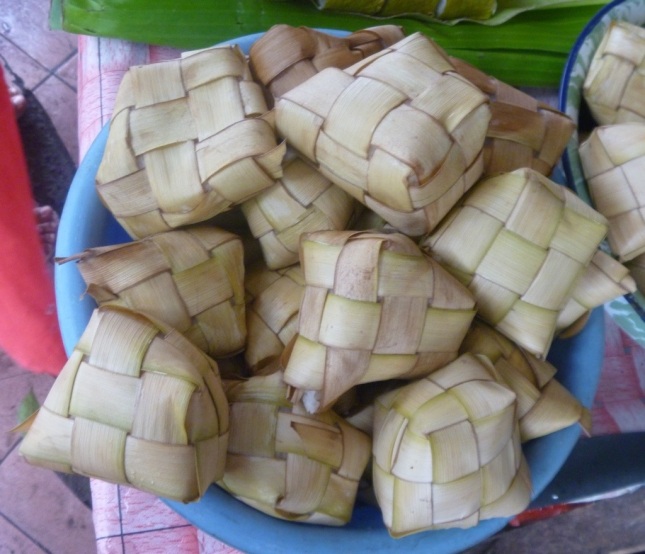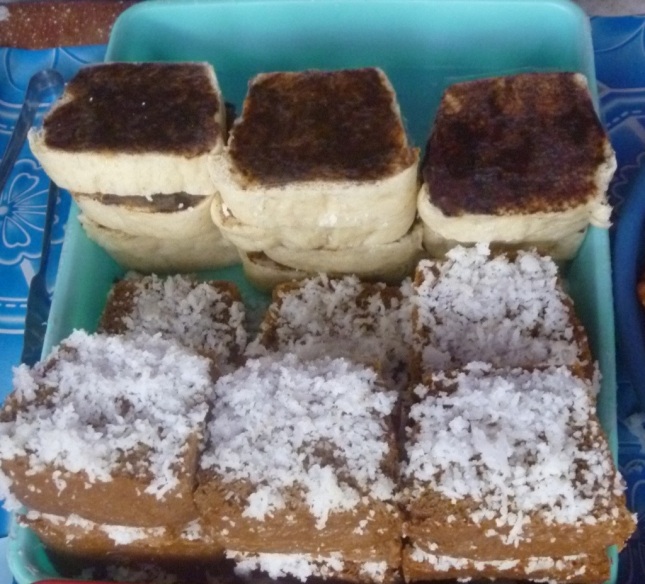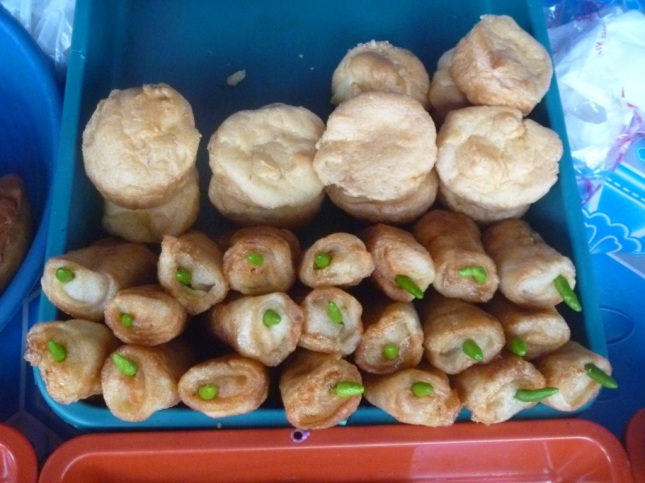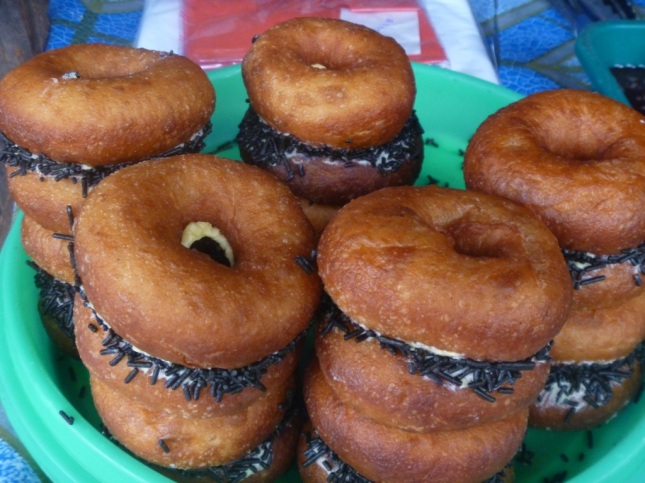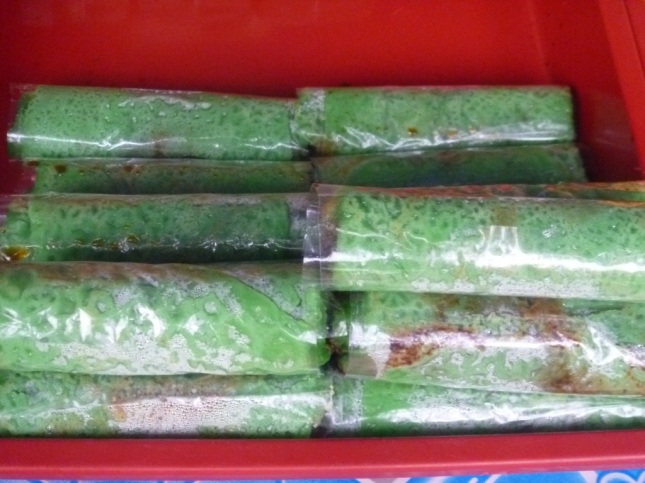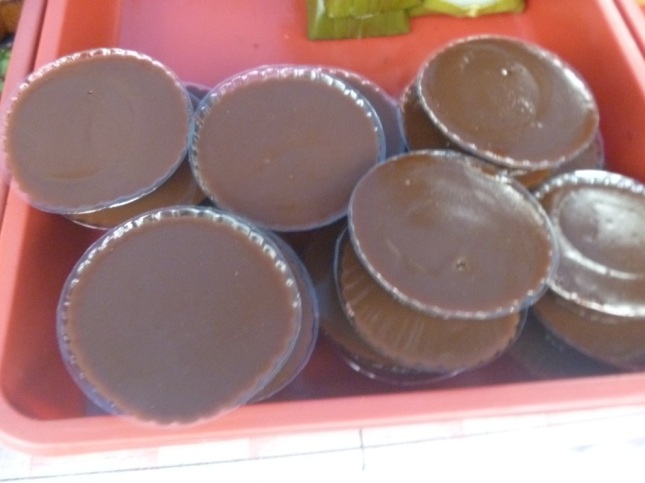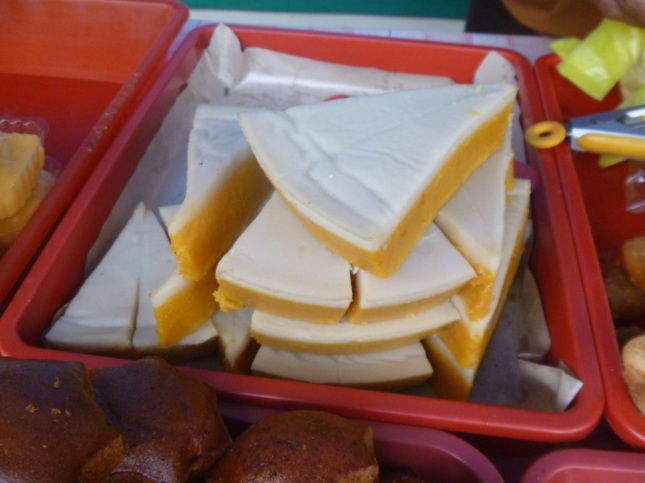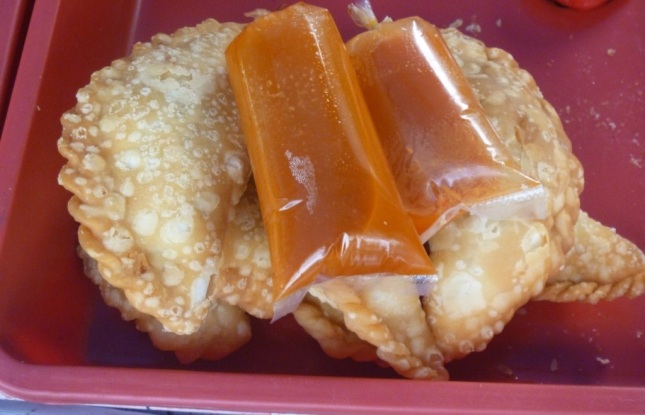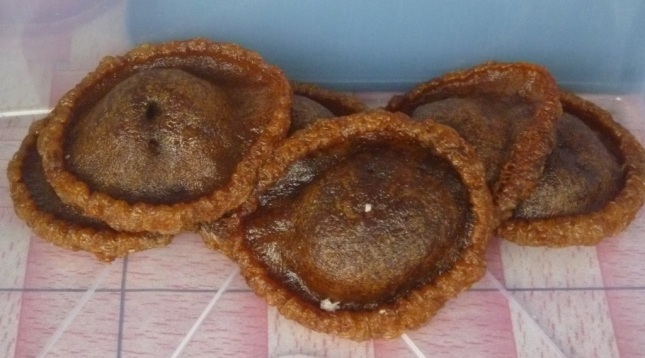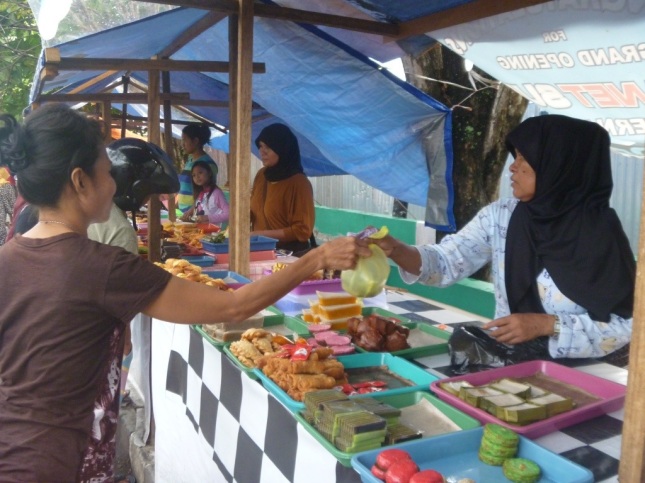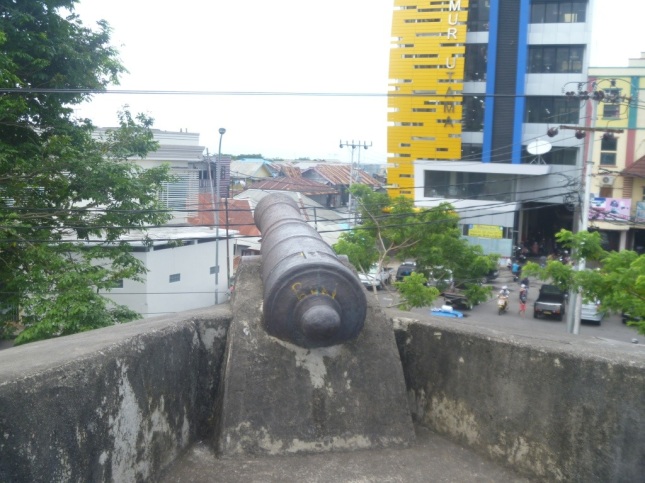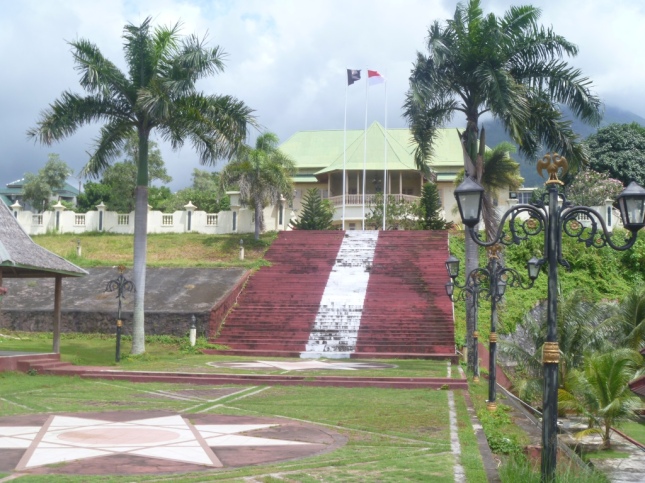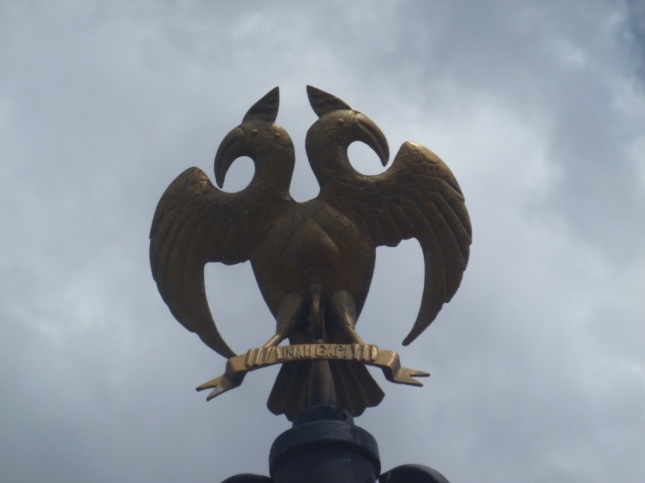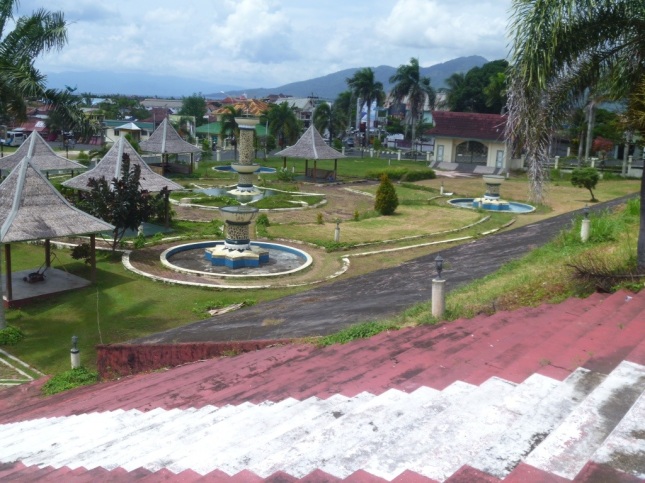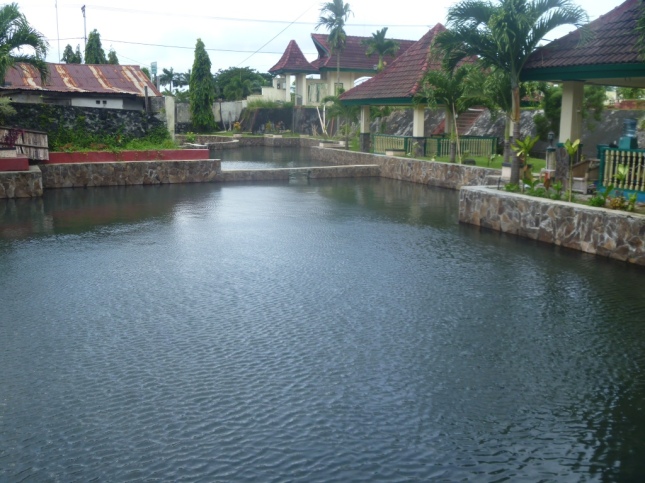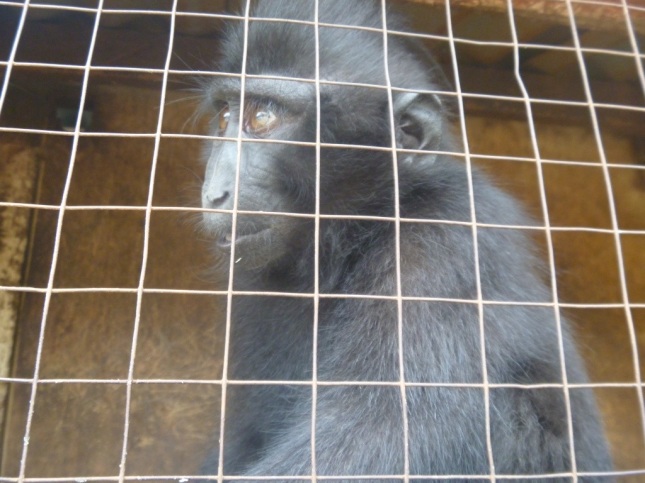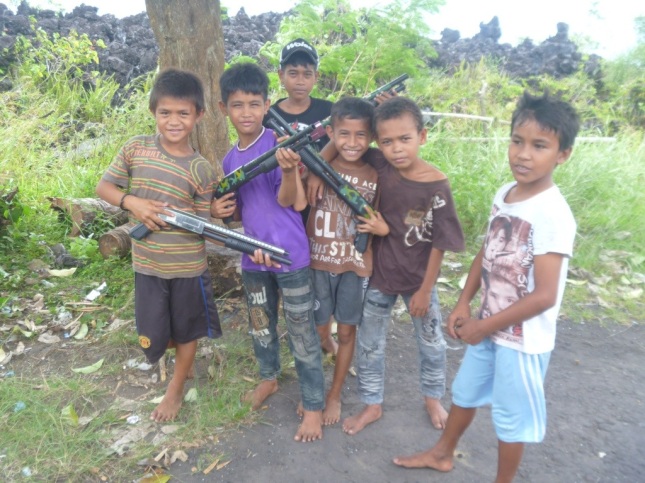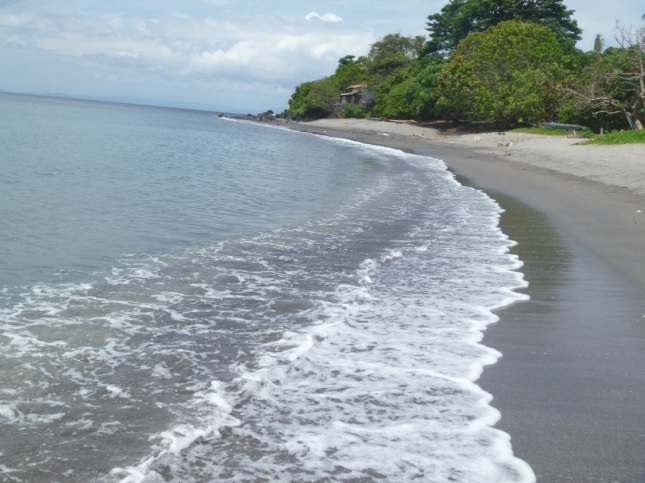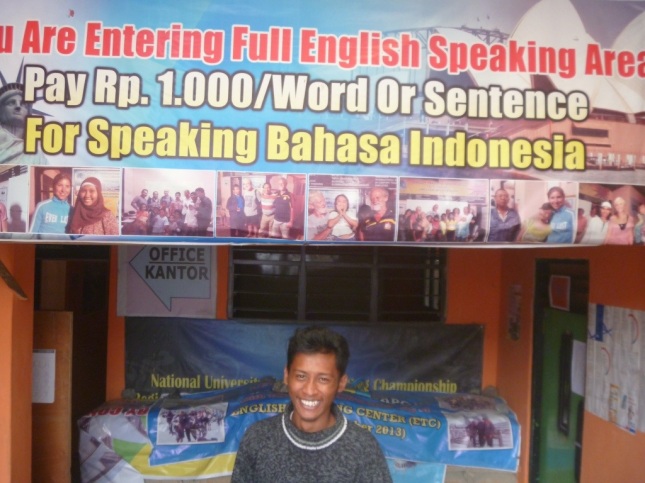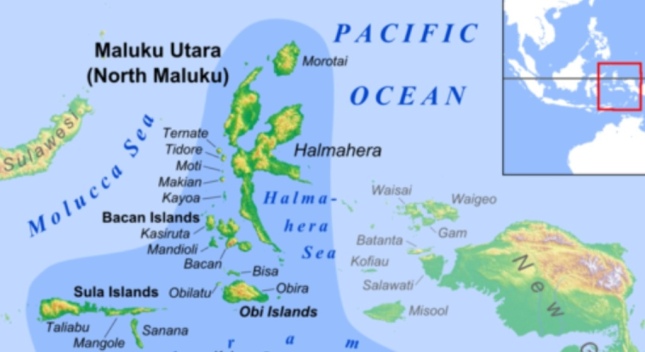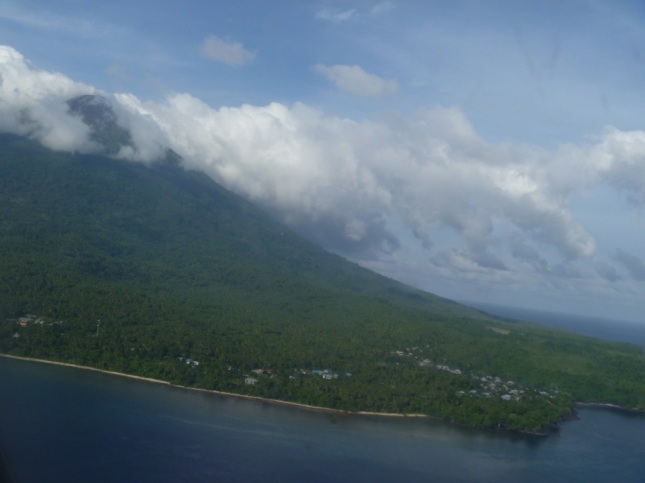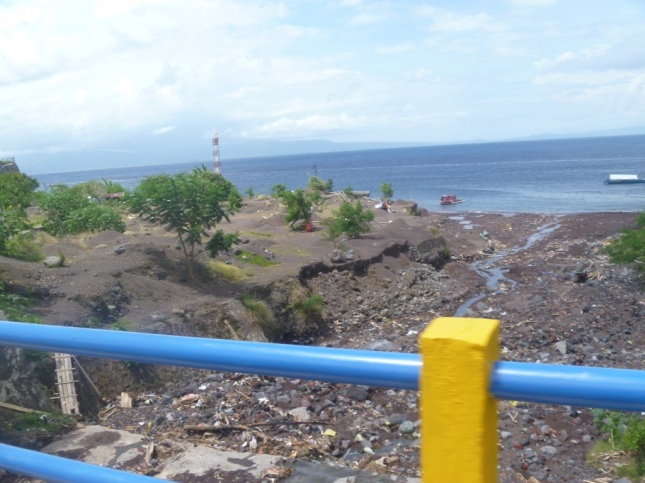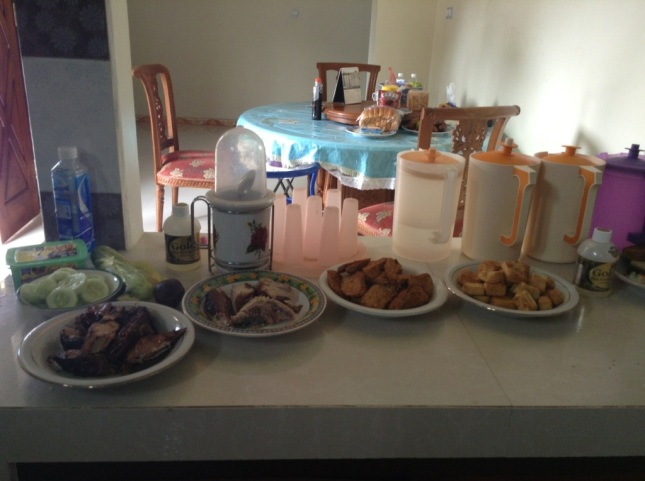Ternate is in the throes of preparations for the upcoming Lebaran! As I am driven around, I see it everywhere in many shapes and guises. The lead up to Lebaran feels very similar to the lead up to Christmas.
Contributing to the atmosphere are the many banners displayed along the road sides. Every day there seems to be more and each one wishes each and all a ‘Happy Lebaran’. They all include a huge picture of someone of political significance, either from local or federal politics. Even parties in opposition have utilised the occasion! The one that grabbed my eye was outside the kraton (sultan’s residence) and included a picture of the current Sultan and his fourth wife (couple on the left). 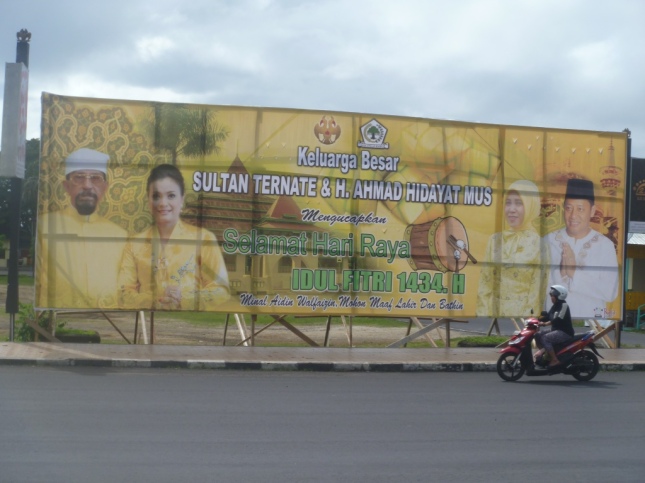 Unfortunately the wife’s face is slightly obscured by the poles supporting the banner! The wording means: The large family of the sultan and his wife wish everyone a ‘Happy Lebaran’. Then along the bottom is the phrase that is synonymous with Lebaran. Mohon maaf lahir dan bathin which means please forgive my spiritual and emotion wrongdoings. For Muslims, Lebaran is not just a time of celebration, but is also one for asking for forgiveness from ones family and friends. In Indonesia, Muslims travel far and wide to return home to their families to not only join them in the Lebaran festivities, but more importantly to “Mohon maaf lahir dan bathin”. The huge increase of domestic tourists began a few days ago and each night on the news are reports of the packed airports and no doubt stories of the terrible traffic on the roads will also begin circulating. Even here, relatives have started appearing from neighbouring islands and every day I am introduced to a new face.
Unfortunately the wife’s face is slightly obscured by the poles supporting the banner! The wording means: The large family of the sultan and his wife wish everyone a ‘Happy Lebaran’. Then along the bottom is the phrase that is synonymous with Lebaran. Mohon maaf lahir dan bathin which means please forgive my spiritual and emotion wrongdoings. For Muslims, Lebaran is not just a time of celebration, but is also one for asking for forgiveness from ones family and friends. In Indonesia, Muslims travel far and wide to return home to their families to not only join them in the Lebaran festivities, but more importantly to “Mohon maaf lahir dan bathin”. The huge increase of domestic tourists began a few days ago and each night on the news are reports of the packed airports and no doubt stories of the terrible traffic on the roads will also begin circulating. Even here, relatives have started appearing from neighbouring islands and every day I am introduced to a new face.
Which leads me to another common sight which hints that something special is on the horizon. The very long queues at the petrol stations where vehicles of all shapes and sizes are filling up in preparation for the long drives ahead for ‘mudik’ (the ‘pilgrimage’ home). The last time I saw queues this long were the days before the hike in petrol prices. I am extremely grateful that Bu Esty is only planning to travel as far as Pulau Tidore for Lebaran and that our travel merely involves chartering a speedboat. Joining the millions of Indonesians on the road at this time of year would definitely ensure any journey would take significantly longer than usual.
In preparation for the literally millions of people who will be out on the roads for Lebaran whether driving long distances to mudik or just out shopping, there are police everywhere, and especially concentrated in areas which have had high numbers of traffic accidents. In Bali they were all along the main highway to Java and here in Ternate, they are along the main road outside the pasar (market) and the 2 malls. Their numbers are particularly high in the hours before sunset as Muslims prepare to buka puasa, buying cakes or kelapa mudah.
Unless it is the few hours just before sunset or later after buka puasa, the streets are not that busy. It feels very strange and I am looking forward to seeing just how much this changes once life here returns to normal. What is really noticeable are the many closed shops during the day and at night and the almost deserted night markets! Most restaurants are not allowed to serve meals so some of them choose to sell cakes instead with their chairs and tables neatly stacked against the walls. Those that open at night rarely have customers. The area along the beach front is usually thriving selling meals, roasted corn and peanuts but during puasa, the chairs and tables are set up however sit there forlornly. The corn and peanut sellers are lined up along the road with their light hanging above their food yet I rarely see anyone patronising their kaki lima’s (push carts). It seems that families who rely on food sales in Muslim areas must find that their precarious occupation is even more unreliable during the lead up to Lebaran. Other shops do very well however and in most cases take advantage too of the pre Lebaran shopping frenzy for food, new clothes and all the other necessities.
One of the shops doing a roaring trade at the moment are the paint outlets as families prepare for Lebaran by sprucing up buildings and fences. Houses are painted the most amazing variety of colours and instead of looking garish as it would in Australia, it looks brilliant and colourful. Reminds me of the buildings in Little India or Mexico. The amazing colour combinations work very well.
As you can see, no preparation is done before painting. The new coat of paint is slapped on over last years paint. It is all about making everything presentable purely for Lebaran. The amount of each house that is painted depends on the amount of paint that each family can afford.
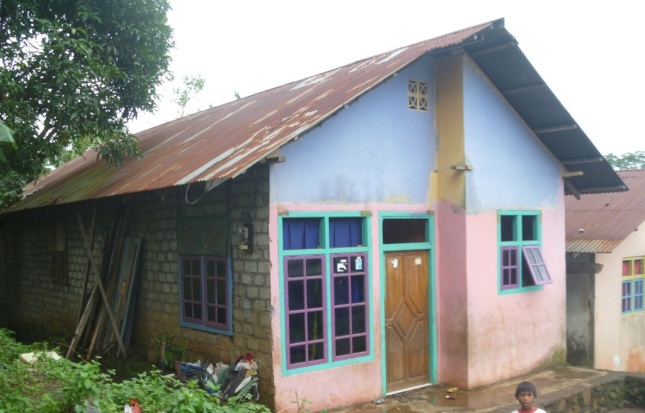 Sometimes just the front facade is painted and in some areas, none of the houses are painted at all and they remain the original colour of bricks and cement even though they are many years old. It would also appear that the interior of Muslim houses are getting some attention if the number of curtains I have seen on clothes lines lately is any indication!
Sometimes just the front facade is painted and in some areas, none of the houses are painted at all and they remain the original colour of bricks and cement even though they are many years old. It would also appear that the interior of Muslim houses are getting some attention if the number of curtains I have seen on clothes lines lately is any indication!
On the 27th day of puasa, was the Ela Ela festival. During the day, I saw many people selling empty bottles, bamboo frames and sticks all complete with wicks..
 Bapak bought a bunch of the sticks and later that night I discovered why. The sticks are purely for young children who carry them around in groups roaming the streets. Here are Bu Esty’s children with a few of their cousins just after the wicks were lit.
Bapak bought a bunch of the sticks and later that night I discovered why. The sticks are purely for young children who carry them around in groups roaming the streets. Here are Bu Esty’s children with a few of their cousins just after the wicks were lit.
 The wick sits in a small reservoir of kerosene which keeps the lamp alight for about half an hour.
The wick sits in a small reservoir of kerosene which keeps the lamp alight for about half an hour.
Later when out driving, we passed many groups of children wandering around having fun with their bamboo sticks and hanging on verandahs were the bottles or standing on footpaths were the bamboo stands all alight for ‘Ela Ela’
We still have 3 days yet before Lebaran, so I look forward to seeing what else will happen before Lebaran dawns on the 9th.

